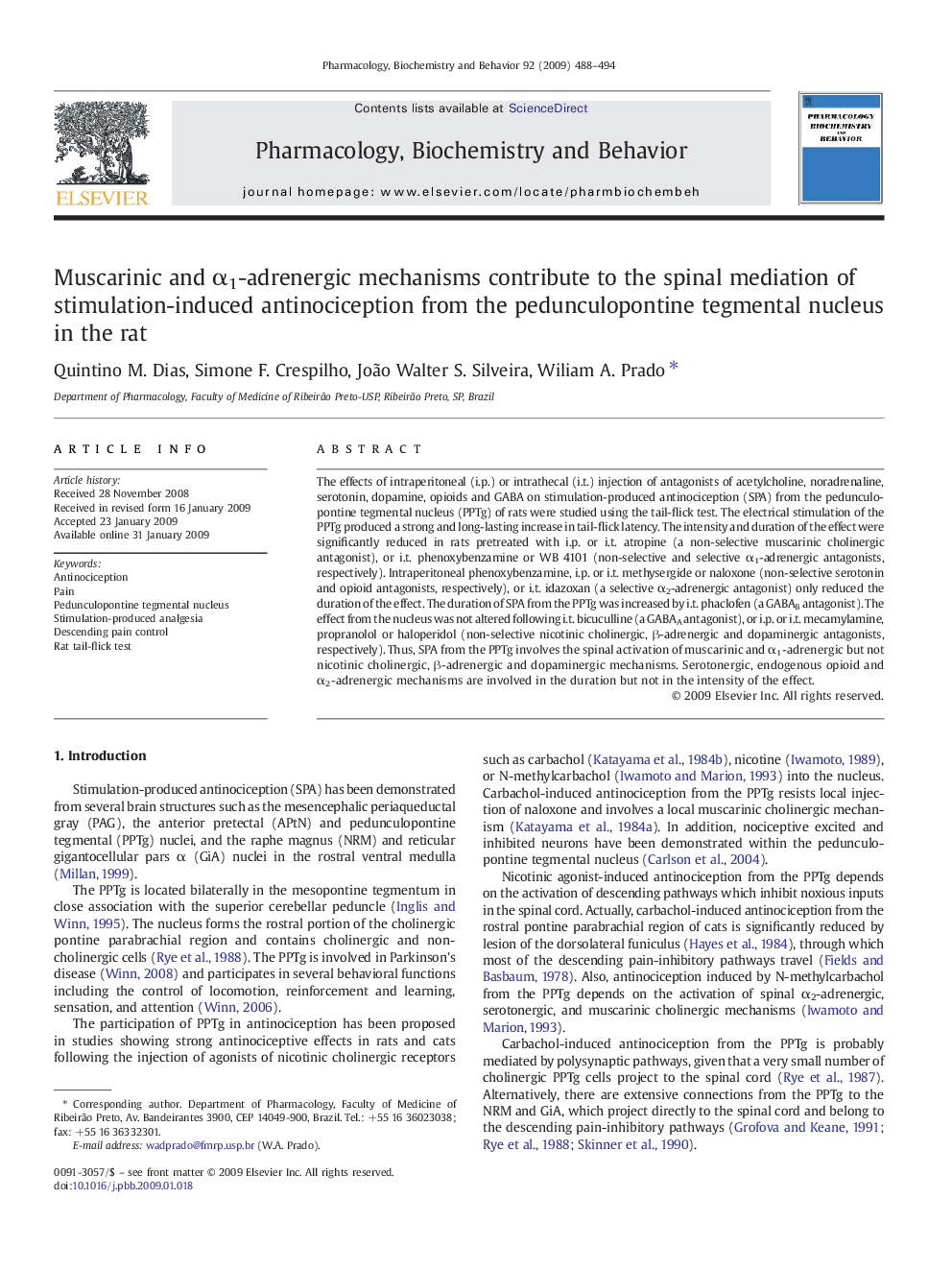| Article ID | Journal | Published Year | Pages | File Type |
|---|---|---|---|---|
| 2013746 | Pharmacology Biochemistry and Behavior | 2009 | 7 Pages |
Abstract
The effects of intraperitoneal (i.p.) or intrathecal (i.t.) injection of antagonists of acetylcholine, noradrenaline, serotonin, dopamine, opioids and GABA on stimulation-produced antinociception (SPA) from the pedunculopontine tegmental nucleus (PPTg) of rats were studied using the tail-flick test. The electrical stimulation of the PPTg produced a strong and long-lasting increase in tail-flick latency. The intensity and duration of the effect were significantly reduced in rats pretreated with i.p. or i.t. atropine (a non-selective muscarinic cholinergic antagonist), or i.t. phenoxybenzamine or WB 4101 (non-selective and selective α1-adrenergic antagonists, respectively). Intraperitoneal phenoxybenzamine, i.p. or i.t. methysergide or naloxone (non-selective serotonin and opioid antagonists, respectively), or i.t. idazoxan (a selective α2-adrenergic antagonist) only reduced the duration of the effect. The duration of SPA from the PPTg was increased by i.t. phaclofen (a GABAB antagonist). The effect from the nucleus was not altered following i.t. bicuculline (a GABAA antagonist), or i.p. or i.t. mecamylamine, propranolol or haloperidol (non-selective nicotinic cholinergic, β-adrenergic and dopaminergic antagonists, respectively). Thus, SPA from the PPTg involves the spinal activation of muscarinic and α1-adrenergic but not nicotinic cholinergic, β-adrenergic and dopaminergic mechanisms. Serotonergic, endogenous opioid and α2-adrenergic mechanisms are involved in the duration but not in the intensity of the effect.
Keywords
Related Topics
Life Sciences
Biochemistry, Genetics and Molecular Biology
Biochemistry
Authors
Quintino M. Dias, Simone F. Crespilho, João Walter S. Silveira, Wiliam A. Prado,
